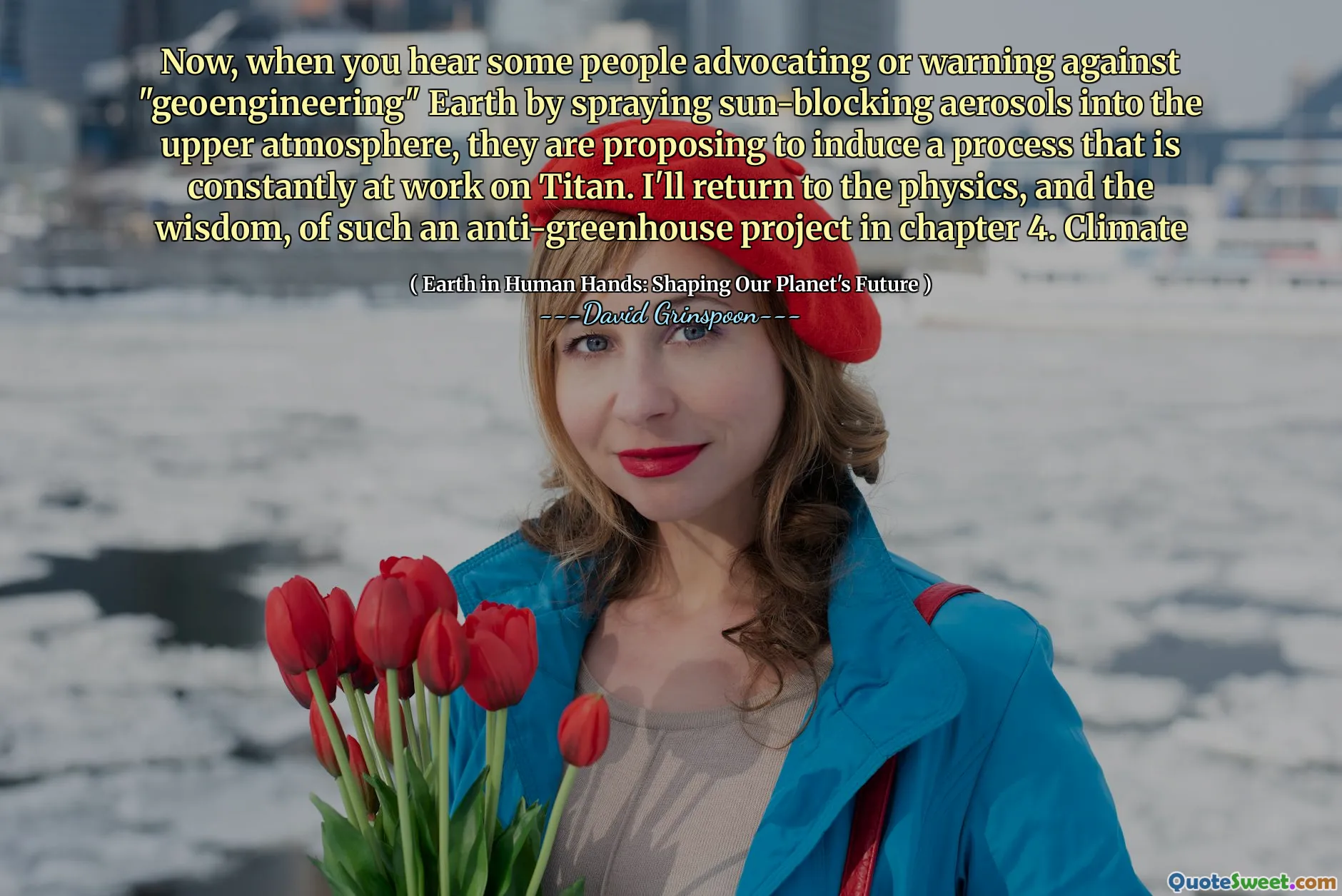
Now, when you hear some people advocating or warning against "geoengineering" Earth by spraying sun-blocking aerosols into the upper atmosphere, they are proposing to induce a process that is constantly at work on Titan. I'll return to the physics, and the wisdom, of such an anti-greenhouse project in chapter 4. Climate
This quote from David Grinspoon's Earth in Human Hands: Shaping Our Planet's Future highlights the complex and contentious debate surrounding geoengineering as a potential solution for Earth's climate crisis. The mention of Titan, Saturn’s largest moon, is especially insightful because it draws a parallel between Earth's proposed geoengineering techniques and natural processes occurring elsewhere in our solar system. On Titan, an anti-greenhouse effect is at work due to the presence of sun-blocking aerosols in its atmosphere, which naturally cool its surface.
By referencing this, the author not only grounds the concept of geoengineering in known planetary science but also encourages a deeper consideration of the physical realities and potential wisdom behind deliberately modifying Earth’s atmosphere. The phrase "advocating or warning against" captures the polarized nature of the discourse, recognizing that there are staunch proponents who view it as a necessary last resort to mitigate climate change, while others raise ethical, environmental, and political concerns about unintended consequences.
The idea of spray-induced sun-blocking aerosols invokes critical questions about humanity's role in shifting planetary systems, the limits of technological intervention, and the need for humility in the face of complex climate dynamics. Grinspoon’s promise to return to the physics and wisdom of such projects in subsequent chapters suggests a nuanced and thoughtful analysis rather than alarmism or uncritical support.
In summary, this quote challenges us to think about geoengineering beyond simplistic notions and to consider both cosmic context and the detailed science that must underpin any responsible planetary-scale interventions. It invites readers to weigh risks, benefits, and ethical dimensions with the full extent of scientific understanding.






